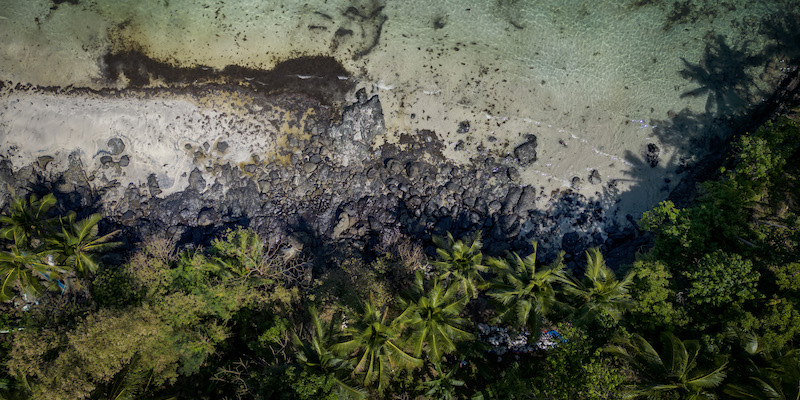Earlier this week, recovery operations began on the wreck of a large oil tanker, the MT Princess Empress, which capsized in the Philippine Sea about a month ago. The accident caused the spill of hundreds of thousands of liters of oil, with enormous environmental damage: the marine ecosystem of that area is one of the most diversified and important in the world, home to various rare or endangered species.
The incident occurred on February 28: in the afternoon of that day the Philippine Coast Guard had given the news of the capsizing of the tanker off the coast of Naujan, in the province of Eastern Mindoro. The ship was carrying around 800,000 liters of oil and the area where it spilled is very important for the local economy: fishing is one of the main activities in the area, and it is estimated that it is a source of supply for around 2 million people.
Such incidents are not uncommon in the Philippines: the level of maritime safety is low and similar incidents had already occurred in the past, as well as clashes between boats. But the capsizing of the MT Princess Empress has caused major concerns especially the extent of her consequences.
In the weeks following the accident, a large oil slick, about 250 kilometers wide, gradually spread into the Philippine Sea, polluting the coasts of at least three other provinces and threatening the balance of over 20 marine protected areas. The Philippine Coast Guard has been trying to stem it with floating barriers and other systems. But according to the Institute of Marine Sciences of the University of the Philippines, the patch could extend over 360 square kilometers.
The wreck of the tanker, which sank after capsizing, was identified by the Philippine authorities on 21 March. It is unclear how much oil the vessel still contains and how much oil it is leaking each day.
According to Coast Guard estimates, cleanup crews working so far have removed 60 percent of the oil that had reached the shores of several cities in Eastern Mindoro province. Intervention teams sent from Japan, South Korea and the United States are also contributing to the operations, with special equipment not easily available in the Philippines.

Some cleaning operations in Pula, in the province of Eastern Mindoro (Ezra Acayan/Getty Images)
The marine ecosystem in which the accident occurred is considered one of the most important and delicate in the world: species in danger of extinction live inside it, such as the tartaruga embricata (Eretmochelys imbricata), and other species already threatened by climate change such as whale sharksgiant manta rays and dugongs (large marine mammals).
Meanwhile, the oil spill has also reached the Green Isle Passage, the strait that divides the islands of Luzon e you Mindoro: it is a marine reserve that hosts dozens of endemic species (that is, found only in that territory), as it has explained a CNN Irene Rodriguez, who teaches at the Institute of Marine Sciences. In that area, which is located north of where the tanker sank, there is the highest concentration of coastal fish, corals, crustaceans, molluscs, seagrasses and mangroves (two plants) of the Philippine archipelago: according to Rodriguez the An oil spill could lead to long-term damage and a decline in the population of these organisms, also because many of them may not be able to reproduce in such polluted waters.
Rodriguez also explained that some of these species have an important environmental role: mangroves, for example, grow on the coasts and prevent their erosion, as well as reduce carbon dioxide in the atmosphere. Their disappearance could expose those areas to a greater risk of extreme weather events, such as typhoons, which are already quite frequent.
The incident is also causing great economic damage. According to the National Council for Disaster Risk Reduction and Management, more than 170,000 people on the coast suffered damage from the oil spill and nearly 17,000 fishermen lost their jobs due to the temporary fishing ban imposed by the authorities. The Philippine government agency that deals with fisheries has estimated that this sector is losing the equivalent of 825,000 euros a day. It could take months to completely stem the damage from the spill.
Meanwhile, the government has implemented a program to involve fishermen who are unable to work in cleaning operations and the Philippine Senate has launched an investigation to ascertain responsibility for the accident.
At the Philippine newspaper Rapplera spokesman for the Ministry of Justice he said that the capsizing of the MT Princess Empress was a “crime” and not an accident. At the center of the Senate investigation is the company that owns the ship, the RDC Reield Marine Servicesthe Philippine Coast Guard and the Marine Industry Authority: one of the hypotheses being investigated is that the tanker was operating in the Philippine Sea without the necessary authorization.

